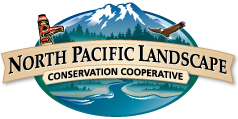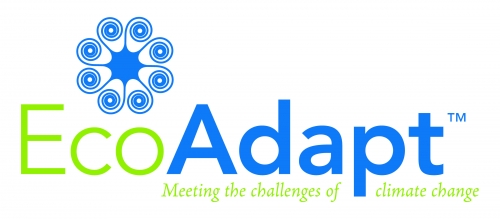Sea Level Rise and Coastal Change in the Pacific Northwest
Overview
Climate change is one of the most pressing issues facing natural resources management, and decision makers at all levels are faced with choices on how to avoid, minimize, adapt to, and/or mitigate climate change impacts. Practitioners often struggle with how to identify and prioritize specific climate adaptation actions - actions taken to either increase or enhance resilience or decrease vulnerability of habitats, species, and communities in a changing climate. Management actions may have a higher probability of being successful if they are informed by available scientific knowledge and findings. By evaluating specific climate adaptation actions on scientific knowledge and findings, we may be able to increase resource management effectiveness and efficiency.
Why Sea Level Rise?
Sea level rise is having and will continue to have a wide range of effects on coastal habitats, species, and communities, ranging from saltwater intrusion of freshwater ecosystems and aquifers to habitat conversion and infrastructure loss. Some of these effects are already causing forced relocation of coastal communities in Alaska (e.g., Shishmaref, Kivalina, Newtok) and Washington State (e.g., Hoh).
Further, during the initial Available Science Assessment Process, sea level rise emerged as a key stressor identified in federal, state and climate change strategy documents developed at national, regional, and local scales. In addition, members of the Northwest Climate Science Center’s Executive Stakeholder Advisory Committee (ESAC) have expressed the need for scientific syntheses on a number of climate-related topics, including the effects of sea level rise on Northwest coasts.
Methodology
Our methodology utilizes literature reviews and interviews, an expert elicitation process, and extensive engagement with natural resource managers and scientists from federal, state, tribal, and private entities in Washington and Oregon working to address sea level rise. Our methodology is also designed to enhance the culture of scientific integrity, the perceived credibility and/or applicability of research information, and facilitate the exchange of information on actionable science between scientists and resource managers.
Phase 1: Identify and synthesize the available science on climate adaptation actions that are commonly used in response to sea level
rise by resource managers in Oregon and Washington.
- Identify, characterize, and catalog specific sea level rise climate adaptation actions discussed in regional syntheses
- Interview a representative set of 25-30 coastal managers in Washington and Oregon to identify top actions used and cross-reference these responses with actions identified in the literature
- Conduct a systematic mapping exercise to summarize the current state and trajectory of knowledge around a particular broad management- or policy-relevant sea level rise question
- Create and disseminate a sea level rise adaptation Science Synthesis with the help of a Scientific Expert Panel
Phase 2: Convene a series of workshops to disseminate the results of the reviews and create regional scientist-manager partnerships to address scientific
knowledge gaps and management priorities.
- Bring managers and scientists together to share the scientific consensus around sea level rise climate adaptation actions, discuss current sea level rise plans and priorities, identify critical knowledge gaps and potential applications of new science products, and develop regional partnerships.
Phase 3: Evaluate and share results of the science review, workshop outcomes, and the entire ASAP process.
-
Qualitatively and quantitatively evaluate and share the methods and lessons learned to improve future ASAP systematic reviews.
Funded by


Products
- Synthesis report documenting ASAP sea level rise science synthesis process and outcomes and manager-scientist workshop process and outcomes
Partners






